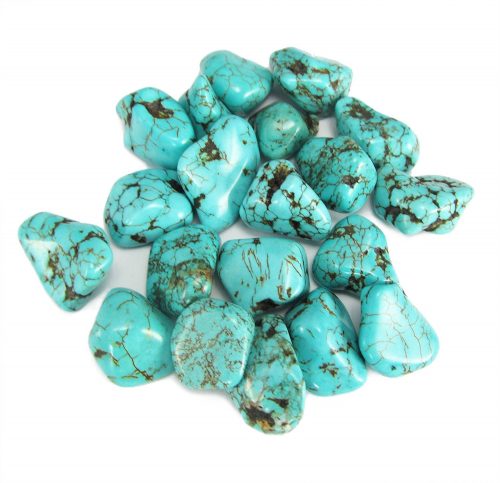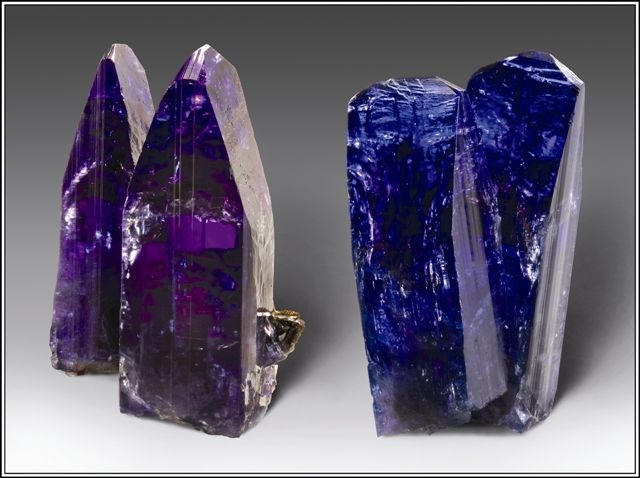What are the birthstones for december?
Although December is strongly associated with certain colors that bring us to holidays, such as red and green, natives born in December may choose to upgrade their jewelry with turquoise and tanzanite, birthstones known for their gorgeous shades of blue. . These talisman-stones, chosen by the ladies and gentlemen born in December, compete with the precious stones, being known for their unique meanings and the authentic vibrant note they bring to their possessor or possessor. Bithstones jewelery with turquoise and tan can be the perfect gift for the people we celebrate, love and appreciate, such as family members or close friends.
We present in this article the history, properties and meanings of the December stones – turquoise and tanzanite – bringing to your attention useful information that any jewelry lover should know before buying the birthstone jewelry according to his zodiac and personality.
Turquoise

Short history
From ancient times, cultures around the world have admired the distinct blue hue of turquoise. Ancient Egyptian tombs are the oldest evidence of the stone’s popularity. These contain sophisticated jewelry, decorated with turquoise, dating from the 3rd century BC. The Egyptians used it to create gold necklaces and rings, but also inlaid on the jewels that depicted a beetle – an object used as an amulet in ancient Egypt. A notable example is the funeral mask of Pharaoh Tutankhamun.
The oldest turquoise mines are located on the Sinai Peninsula in Egypt. A mine is located right next to an ancient temple dedicated to Hathor, the goddess of love and joy in Greek mythology. The Egyptians called the gem “mefkat”, a word that means joy and delight.
In Iranian architecture, the domes of the palaces were covered with turquoise, because the blue of this stone resembled the blue of the sky. This action later inspired architects, who used it to build buildings, which happened in the case of the Taj Mahal.
The people believed that the stone could provide protection, which is why they adorned their daggers and horse’s hooves with it. The people called the turquoise “pirouzeh”, which meant “victory.” They wore turquoise jewelry around the neck and around their turban.
The Turks introduced this highly prized mineral to Europe, via the Silk Road, in the 13th century. The name of the stone derives from the French expression “pierres tourques”, which means “Turkish stones”, because they were brought to Europe from Turkey.
The national stone of Tibet and Iran, the turquoise or the peruvian, as they say, has long been considered a stone that confers health, luck and protection against evil.
Technical properties
Mineral: Turquoise
Chemical composition: Copper and aluminum hydroxide phosphate
Colors: blue, blue-green, green
Hardness – Mohs scale: from 5 to 6
The mineral is found in arid areas, where rainwater dissolves copper in the soil, forming colored nodular deposits when combined with aluminum and phosphorus. Copper contributes to the blue of the stone, while iron and chromium give it a green color. Sometimes the turquoise may have a network of veins, black or brown, called a “spider web”. This can lower the value of the stone, although there are people who find this structure interesting.
The porosity, texture and hardness of the rock differ greatly. Turquoise is an aggregate of microscopic crystals that form a solid mass. If the crystals are collected together, the material is less porous, so it has a finer texture. Due to its fine texture, the stone has an attractive gloss, waxy appearance, when it is polished, the one with a less dense crystalline structure has a greater porosity, therefore a less intense gloss results.
Because of its fragility, the mineral is often treated to increase its durability and color. Some treatments involving wax and oil are relatively harmless, while other methods, including coloring, impregnation and reconstitution are more controversial.
Turquoise is available in a variety of sizes, being used for beads, inlaid sculptures. It is one of the gems that is not evaluated according to the 4 C of the diamond. Instead, the main factors that determine the value of the stone are color, matrix (spiderweb), hardness and size. The most appreciated color is intense, medium blue, but some jewelry lovers prefer the green of the stone.
The highest quality turquoise is in the mines of northern Iran. Other deposits can be found in Afghanistan, Argentina, Australia, Brazil, China, Israel, Mexico, Tanzania and the United States.
meaning
Turquoise is the lucky stone for those born in December. The properties with which the stone is associated are prosperity, success, happiness and luck. It is also used to enhance creativity, serenity and spiritual union. It also symbolizes power, protection, sensitivity, spiritual balance, friendship and peace.
Zodiac sign: Sagittarius (November 21 – December 21)
Turquoise jewelry, vibrant pieces that bring a special air
The stone is popular in decorating tribal and ethnic jewelry, especially in Native American and Tibetan styles. Turquoise is amazing when included in the design of yellow gold jewelry, such as Egyptian style jewelry. The unique color of the mineral makes it perfect for summer jewelry, which can be easily matched to any outfit. The gem is also used to create jewelry for men, being used for decorating rings and buttons or other accessories, such as belts. Turquoise jewelry is given on the occasion of the anniversary of 11 years of marriage.
Turquoise care
Because it is a porous material, the turquoise has to be taken care of properly, in order to maintain its color and luster. If exposed to direct sunlight, oil, perfume, detergent or other chemicals, it may be damaged by color. It is prudent to remove the turquoise jewelry before washing your hands or before taking on household chores. The stone should be stored separately from the other gemstones, to avoid any scratches.
Tanzanite
Short history
The royal blue is the lush color of the tanzanite, the exotic stone found in one place on Earth, near the majestic Kilimanjaro mountain. Tanzanite is a relatively new stone on the market for precious and semi-precious stones. It is said that a member of the Masai tribe, Ali Juuyawatu, discovered in 1967 a group of transparent crystals of a deep blue, in Merelani, an area in northern Tanzania. He alerted the wealth hunter Manuel D’Souza, who quickly recorded 4 mines containing these blue crystals. D’Souza hoped that the mines contained sapphire, when in fact blue stones were the newest gems in the world.
The stones were named after the name of the country in which they were discovered – Tanzania. Today, Tanzanian is very popular, being chosen by jewelry designers and other professionals who appreciate it for its unmatched beauty and spectacularity. The vivid color, high clarity, and the structure of the stone, which can be cut into larger dimensions, are the characteristics that contribute to its popularity.
Although it does not have a long history, as other gems have, the tanzanite is sought after by the lovers of jewelry due to its exclusive origin and the beauty of the intense blue, which brings to every jewel a conquering charm. It is known that tanzanite is rarer than diamond.
Technical properties
Minerals: Zoisit
Chemical composition: hydrated silicate of aluminum and calcium
Colors: purple-violet to blue
Hardness – Mohs scale: from 6 to 7
The Tanzanite has the particularity of changing the color depending on the orientation of the crystal, changing its color in three different shades – starting from a purple-blue, similar to the color of sapphire to deep purple. The same pleochroic effect presents it depending on how the crystal is illuminated (natural or artificial light).
Untreated, tanzanite is usually brown. Most gemstones are heat treated to reveal their beautiful blue hue. The blue crystals initially discovered by the member of the Masai tribe were an exception, probably being exposed to a heat source inside the mine. The way the stone facade plays an important role in the display of color, considering that the tanzanite is influenced by polychrome.
Tanzanite is available in a variety of sizes, shapes and models, the most popular being the oval and cabochon – the unvarnished gem variant. The deepest colors are usually observed on larger stones, over 5 carats. Smaller stones often have less intense colors. The inclusions visible to the eye decrease the value of the tanzanite.
The largest faceted Tanzanite crystal has 737 carats, and the most famous Tanzanite crystal (242 carats) is “Queen of Kilimanjaro”, which together with 803 brilliants is mounted on a tiara in a private collection.
Tanzanite is evaluated as the diamond, according to the 4C. Purchasing the crystal from a certified jeweler gives you the guarantee that you own an original, quality stone.
The Tanzanite was worn by many Hollywood stars, including Cate Blanchett, who chose a tanzanite necklace for the Cannes Film Festival, Penelope Cruz, whose engagement ring is decorated with a gorgeous tananite and Anne Hathaway, who she wore a pair of teardrop earrings, decorated with tanzanite, to match her electrifying blue dress, which she impressed during the Oscars in 2011.
meaning
Tanzanite symbolizes creativity, spiritual balance, honor, integrity, compassion and peace. Stone changes negativity into positive energies, relieves stress, anxiety, soothes depression. It is a stone with a strong protective role in all planes. The stone also helps the concentration, stimulating the mental, but also the spiritual capacities.
Zodiac sign: Sagittarius (November 21 – December 21)
Jewelry with tanzanit – amazing noble creations through their unique color and beauty
The unique blue of the tanzanite contributes to the unmatched beauty of the jewelry, giving an exotic, regal, lush air. Set in any precious metal, these stones will bring to life magnificent pieces, which will express your unique personality and will make you dress in any occasion. Jewelry with tanzanit can be given to loved ones born in December or on the occasion of the 24th anniversary of their marriage.
Tanzanite Jewelry Care and Cleaning Guide
Tanzanite should be protected from harsh blows, which could cause damage. Therefore, the tanzanite should be supported in mounts that protect the stone. Jewelry with tanzanite should not be subjected to extreme temperatures or sudden changes in temperature. In addition, the stone should not be carried around acid-containing solutions. Remove your tanzanite jewelry before doing sports or other more intense activities. Keep tanzanite jewelry away from other jewelry to avoid possible scratches. It is best to store them in a soft cloth or jewelry box lined with textile material.
The birthstones jewelery with turquoise and tanzanite is a very loved gift due to the personal meanings and the vibrant colors of the stones, which ennobles both the ladies and gentlemen’s outfits, offering a special energy and at the same time emphasizing elegance and refinement.





